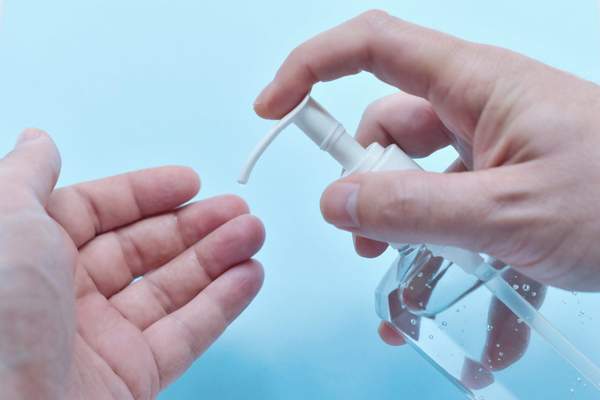- World's No.1 selling Anti Bacterial Treatment System!
- +971 56 3304466
- +971 55 9676070
- info@bactakleen.ae
What is the sanitizing solution?

What is the difference between sanitation, disinfection, and sterilization?
February 9, 2021
Using disinfectants to prevent hand, foot, and mouth disease from spreading
February 9, 2021Since late 2019 coronavirus came into play and changed people’s way of life. Early 2020, the virus had already spread to almost every country across the globe. Businesses offering food services like restaurants and hotels were among the most affected companies. But when companies began to resume operations, the hospitality industry was faced with the challenge of keeping businesses open and running while keeping their staff and customers safe from getting the infection at the same time. Tyan et al. (2018) stated that prompted health experts came up with measures to help keep everyone safe; it all comes down to hygiene. That means as long as there is still no vaccine, personal responsibility, cleaning and disinfection is our only line of defense. The disinfectants that are safe to use regularly in the kitchen is what we are focusing on now, and they are known as sanitizing solutions. Sanitizing solutions are disinfectants that are classified as forms of sanitizers.
Types of sanitizing solutions
According to the CDC, it’s important to use disinfectant products that are safe for a particular environment, and in this case, it’s a food establishment. Sanitizing solutions are mostly used to eradicate harmful microorganisms to prevent them from causing infections via food. Otherwise, these microorganisms can cause food poisoning. But now, the world is worried about more than just pathogens responsible for food poisoning; we are also concerned with COVID-19 now. The good news is that there are three types of sanitizing solutions that have been approved for use on food contact surfaces, and they are all effective against this new virus (Kilonzo-Nthenge & Liu, 2019). The sanitizing solutions are Chlorine (bleach), Quaternary ammonia (QUATs), and Iodine. But as much as these sanitizing solutions are effective, there are factors that influence their effectiveness.
Factors affecting the effectiveness of sanitizing solutions
These factors are temperature, concentration, and dwell time. Dwell time is the amount of time needed by the chemical to kill harmful microorganisms. Disinfectants have different dwell times, and they usually take from about 0 to 10 minutes, depending on the active agent in a disinfectant (Holst et al. 2020). The chemical may become ineffective if you rush the process, so ensure that you follow instructions as stated on the product label.
Concentration also must be used, as stated in the manual. Using less can result in waste as the active agent will be rendered ineffective. Using more can cause damage to the surface material it’s applied to, so concentration should be as specified.
Temperature tends to affect the solutions; differently, the increase in temperature can improve the antimicrobial activity of some disinfectant solutions like QUATs, but it would decrease some like iodine’s antimicrobial activity. However, if the temperature increases greatly, it can cause disinfectants that can increase their efficacy in environments with increased temperatures to degrade. It weakens its germicidal activity, which can pose a severe risk to your health, the chemical becomes toxic. Sanitizing solutions generally work best at temperatures between 55 degrees F (13 degrees C) and 120 degrees F (49 degrees C). However, it would still be best if you refer to the manufacturer’s manual for instructions.
Best way to sanitize
Before sanitization is done, thorough cleaning must be done to pave the way. Sanitization without thorough cleaning can reduce the efficacy y of the process or even render it ineffective because dirt and debris can prevent the chemical from reaching pathogens. Clean and sanitize meat slicers, food preparation tables, cutting boards, counters, and utensils after every use. For the right concentration of any particular sanitization solution, you prefer to use, refer to the instruction manual on the product label.
References
Holst, M., Brown, L. G., Hoover, E. R., Julian, E., Faw, B. V., Hedeen, N., … & McKelvey, W. (2020). Retail Deli Characteristics Associated with Sanitizing Solution Concentrations. Journal of Food Protection.
Wei, W., Wang, X., Xie, Z., Wang, W., Xu, J., Liu, Y., … & Zhou, Y. (2017). Evaluation of sanitizing methods for reducing microbial contamination on fresh strawberry, cherry tomato, and red bayberry. Frontiers in microbiology, 8, 2397.
Tyan, K., Kang, J., Jin, K., & Kyle, A. M. (2018). Evaluation of the antimicrobial efficacy and skin safety of a novel color additive in combination with chlorine disinfectants. American journal of infection control, 46(11), 1254-1261.
Kilonzo-Nthenge, A., & Liu, S. (2019). Antimicrobial efficacy of household sanitizers against artificially inoculated Salmonella on ready-to-eat spinach (Spinacia oleracea). Journal of Consumer Protection and Food Safety, 14(2), 105-112.




